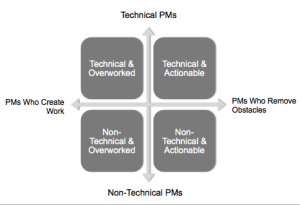In traditional manufacturing, it’s unheard of to purchase production grade equipment without knowing exactly what it will be used for, and more importantly how the significant cost will be recuperated. However, I have seen it first hand that this isn’t always the case with technological investments. It is not uncommon to make a significant investment in a software or hardware solution without fully understanding the business use case.
A September 2015 blog post by Jarvis on Technological Trends that Impress VCs emphasizes leveraging your business use case to make purchasing decisions. Similar themes include not going extravagant until necessary, improvising as you scale, and ultimately not making a purchasing decision merely because the technology is the best, but rather choose the best solution for your business.
A Workspace blog post “Investing in new technology – right for my business“, written by Mark Sharman, discusses some of these same points. Mark raises the concern of being carried away by all the technology bells and whistles, so strongly recommends having a business use case or cost/benefit analysis to fall back on. Additionally, the “real cost of the investment” needs to be fully recognized, inclusive of delays and opportunity costs of not doing something else. That said, Mark reminded us that surviving in business requires keeping pace with change, but thriving in business requires leading the change.
This effectively highlights the conundrum of use cases versus technology investment. If you make the investment to stay on top of changes in technology, will the use cases come? Or if you define the use cases, will you be leading the pack but putting yourself at risk?
Example 1
In one example I’ve seen, the CTO had implemented a massive initiative to move everything to the cloud. At the time, I oversaw highly critical, back office processes. While we had been in the process of reinventing our systems, it didn’t make a lot of sense for us to move into the cloud. It would have added extra layers and complexity, and moved us away from our data sources. However, the implication of not complying to the blanket initiative were large enough that I chose to define a solution where we would be able to move components to the cloud. After I left my position, a former employee of mine, who was still involved, asked why I had designed the system for the cloud. To him, it didn’t make any sense. I agreed, but explained the nature of the political decision I reacted too.
Moral of the story: Just because we can, doesn’t mean we should.
Example 2
In another example, I was working with a company to implement a very complex software solution. They made significant investment in this solution, and worked closely with us during the development and validation phases of the project. There were two project phases that each took 5-6 months to complete. After the implementation was complete, we didn’t hear anything else about it for another ~6 months. At this time, the company asked for a in-depth, technical and business training working through the business requirements through to the technical implementation. During that training, I was told that the team was still working on the use cases for how they wanted to leverage the solution.
It seemed to me that the significant investment in capital and time would have encouraged the need for a business use case before implementation, but that wasn’t the case. Should the company have made this investment without the use case? They were at the cutting edge of this solution, and were able to influence the process by taking a very hands-on approach.
Moral of the story: Sometimes it’s better to be first and influence the solution, than worry about exactly how you are going to use it.
I was talking to my mentor and friend, Dave Shuman, yesterday about this. He challenged that some of the newer, trending technologies lend themselves to investment first, then defining the use cases. The low barriers to entry from a cost and implementation perspective allows for that buy first, define later approach. Lean Startup development methodologies also lend themselves to building in incremental blocks, then iterating until you find the “right” product fit for your customer.
Final Thoughts
So whether you define your use case first, or whether you invest in technology first, you do need to figure out that sweet spot to getting to your return on investment. We all know how well it turns out if you spend all your money and have nothing to show for it.





